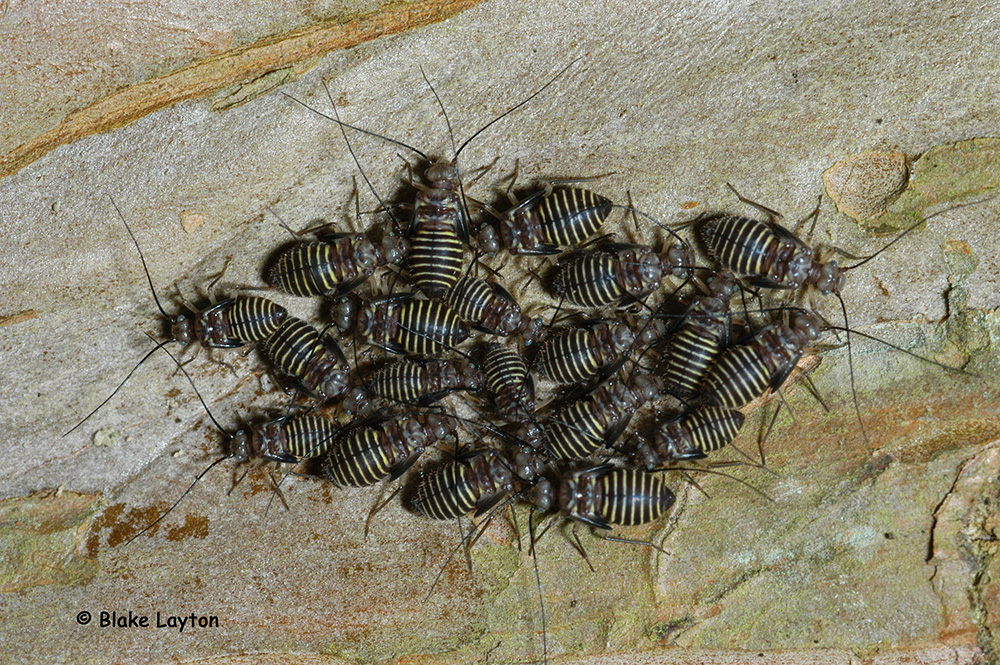Bark Lice | Vol. 3, No. 5

Cerastipsocus venosus
Order: Psocoptera
Family: Psocidae
“I keep seeing groups of these insects on the trunk of our crape myrtle trees. Are these things damaging my tree?” No, bark lice are harmless insects that feed on fungi, lichen, pollen, and other organic materials they find on the bark of trees and similar sites. There are many species of bark lice in the state, but this particular species, which is sometimes called the veined bark louse, is the largest and most conspicuous, and it occurs throughout the state. The wingless nymphs and winged adults form quarter-sized to palm-sized clusters and move about in “herds” over the tree trunk as they “graze.” Because of this behavior, bark lice are also referred to as “tree cattle.” Although this species occurs on many different species of trees, it is most often noticed on crape myrtles, probably because they are so conspicuous on that smooth, light-colored bark.
Along the Gulf Coast, gardeners sometimes encounter a different species of bark louse, the webbing bark louse. Webbing bark lice spin a fine layer of silk that protects them from predators and other hazards. During years of high populations, trunks of large oak trees may be entirely encased in this fine, white silk, which, except for the strange appearance, is also harmless to the tree. Veined bark lice do not produce silk in this way.
Blake Layton, Extension Entomology Specialist, Mississippi State University Extension Service.
The information given here is for educational purposes only. Always read and follow current label directions. Specific commercial products are mentioned as examples only and reference to specific products or trade names is made with the understanding that no discrimination is intended to other products that may also be suitable and appropriately labeled.
Sign up to receive Bug's Eye View.

